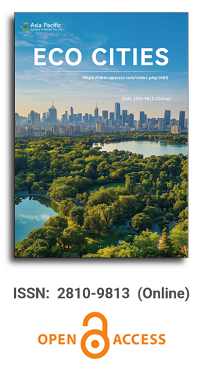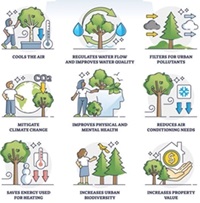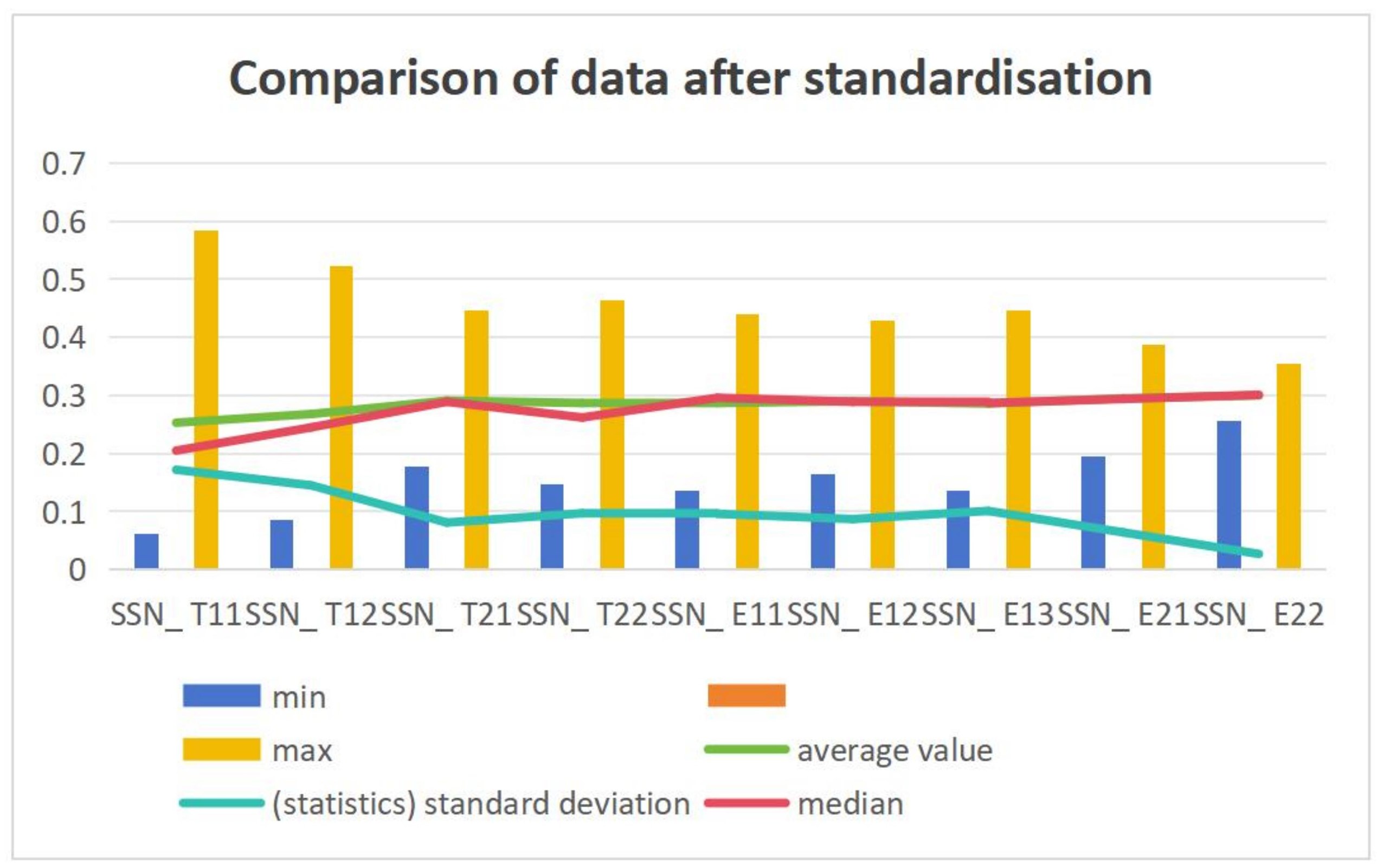
Publication Frequency
Semi-annual
Journal Articles
Search
Search scope
Volume Arrangement
Featured Articles

The exacerbation of climate change impacts within metropolitan areas is a well-documented phenomenon, often leading to severe consequences that pose significant risks to human populations. The impact of urban vegetation and planting design on these factors can be observed. However, it is worth mentioning that while there is an extensive body of literature on the consequences of climate change, there is a relatively small number of studies specifically focused on examining the role of vegetation as a mitigating factor in urban environments. This review paper aims to critically examine existing studies pertaining to the role of urban vegetation in mitigating the detrimental effects of the urban environment. The objective is to offer practical recommendations that can be implemented by city planners. By conducting a comprehensive examination of the literature available in Scopus, Web of Science, and Google Scholar, employing specific keywords pertaining to urban vegetation and climate change, we have identified five prominent concerns pertaining to the urban environment. These concerns encompass particulate matter, gaseous pollution, noise pollution, water runoff, and the urban heat island effect. The present analysis highlights that the impact of urban vegetation on the negative consequences of climate change cannot be unequivocally classified as either positive or negative. This is due to the fact that the influence of urban greenery is intricately connected to factors such as the arrangement, makeup, and dispersion of vegetation, as well as the specific management criteria employed. Hence, this research has the potential to enhance comprehension of the multifaceted nature of urban green spaces and establish a solid groundwork for subsequent investigations.

Tourism has been instrumental in fostering regional economic growth, enhancing the quality of life of residents, and boosting the image of urban areas in Shaanxi, thanks to the accelerated economic and social development of recent years. Nevertheless, the issue of aligning urban development and tourism in terms of space, resources, and the industrial chain remains a significant concern. This paper establishes an evaluation index system for tourism and urban development in the Shaanxi region from 2009 to 2019. It then employs the systematic coupling coordination model to conduct a comprehensive analysis of the coupling coordination degree of tourism and urban development in the region, as well as its various influencing factors. The study demonstrates that the coupling and coordination degree of tourism and urban development in the Shaanxi region exhibited a trend of continuous improvement from 2009 to 2019. The region underwent three stages of development: “uncoordinated development (2009–2011), transformation development (2012–2016), and coordinated development (2017–2019).” The coupling coordination level was elevated from “mild dissonance” to “intermediate coordination” in 2019. In contrast, the tourism economic development of Shaanxi cities remains unequal, as evidenced by the existence of two distinct categories of development: the “lagging tourism economy” and the “coordinated tourism economy.” The findings of this investigation indicate that the general trend of urban development and tourism in Shaanxi is favorable; however, the disparities in the progress of the tourism economy among cities necessitate additional regional coordination and cooperation. The theoretical support for the relevant research and a reference basis for tourism development planning and urban policy making are provided by the evaluation index system and the systematic coupling coordination model proposed in this paper. This will facilitate the sustainable and coordinated development of the tourism industry and cities in Shaanxi.
| Issue | Title | |
| Vol 5, No 2 (2024) | Protocol for a systematic review of the health impact of urban farming interventions | Abstract PDF |
| Brianda Daniela Flores-García, Georgina Mayela Núñez-Rocha, María Natividad Ávila-Ortíz, Karina Janett Hernández-Ruiz, Guillermo Cano-Verdugo | ||
| Vol 5, No 2 (2024) | A study on the green transformation path of industrial heritage from the perspective of user experience: A case study of Jiangsu Garden Expo Park | Abstract PDF |
| Yuning Hou, Sunny Han Han | ||
| Vol 6, No 1 (2025) | Improving indoor temperatures through a homemade green roof modular system | Abstract PDF |
| Renato Castiglia Feitosa, Sara Wilkinson | ||
| Vol 6, No 1 (2025) | Unequal access to drinking water in the city of Doba (Chad): An urban political ecology perspective | Abstract PDF |
| Moye Eric Kongnso, Tiomo Dongfack Emmanuel, Otombaye Pascal | ||
| Vol 6, No 1 (2025) | Analysis of carbon fixation and humidification ability of indoor cultivation of Ficus pandurata Hance | Abstract PDF |
| Jing Li, Xitong Cao, Xinyu Lu, Guohao Li, Runzhuo Wu, Kangshuo Xu | ||
| Vol 6, No 1 (2025) | Spatio-temporal analysis of urban heat island dynamics in urban centers landscape of southwest Ethiopia | Abstract PDF |
| Tesfaye Dessu Geleta, Diriba Korecha Dadi | ||
| Vol 6, No 1 (2025) | Biofences: A successful system for cleaning waterways in Montevideo, Uruguay | Abstract PDF |
| Carolina Ramírez, Alice Elizabeth González, Juan Manuel Ferrés, Pablo Gianoli-Kovar | ||
| Vol 6, No 1 (2025) | Research on the causes of flood disasters in typical cities on the mainstream of the Beijiang River: Taking the “22.6” catastrophic flood of the Beijiang River as an example | Abstract PDF |
| Yan Li, Yuwei Huang, Zhaokun Zhang, Qingzhou Wu, Yunjiang Wu | ||
| Vol 6, No 1 (2025) | Does the green credit policy induce hypocritical environmental information disclosure? The catering behavior of Chinese listed companies | Abstract PDF |
| Yan Zhang, Yuchun Wang, Luping Huo | ||
| Vol 6, No 1 (2025) | High carbon sink goals in the regeneration of waterfront industrial heritage | Abstract PDF |
| Yuning Hou, Chenran Hu, Sunny Han Han | ||
| Vol 6, No 1 (2025) | Engineering and geological environment of urban areas: Experience from Kharkiv, Ukraine (1960–2020) | Abstract PDF |
| Viacheslav Iegupov, Genadiy Strizhelchik | ||
| Vol 6, No 1 (2025) | Influence of different air pollutants on concentration of PM2.5 in national capital region (NCR), India | Abstract PDF |
| Abhishek Prasad, Pooja Maibam, Samiran Saikia, Kurme Uday Teja, Subhadeep Biswas | ||
| Vol 6, No 2 (2025) | The impact of public transportation accessibility on apartment prices in Shiraz: A comparative study in a developing urban context | Abstract PDF |
| Hamed Najafi Kashkooli, Ali Soltani, Farzane Javidi | ||
| Vol 2, No 1 (2021) | Looking forward to a sustainable city through the management mode of Construction and Demolition Waste (CDW): A case study of Barranquilla | Abstract PDF |
| Carlos Albeiro Pacheco Bustos, Edgar Humberto Sánchez Cotte, Carolina Páez | ||
| Vol 3, No 2 (2022) | Achieve sustainable urban development in Lima Callao Megalopolis, Peru by 2050 | Abstract PDF |
| Rodolfo Francisco Castillo-García | ||
| Vol 1, No 2 (2020) | Analysis on the development trend and countermeasures of ecological city in Jinan | Abstract PDF |
| Mengchen Xu, Lijun Zhang, Mengru Zhang, Meiying Jin | ||
| Vol 3, No 1 (2022) | Causes and treatment of air pollution in modern Greater London | Abstract PDF |
| Zhiqiao Yu, Weifang Lu | ||
| Vol 2, No 2 (2021) | Changes in green area of two city halls in Mexico City from 1990 to 2015 | Abstract PDF |
| G. Maldonado-Bernabé, A. Chacalo-Hilu, I. Nava-Bolaños, RM Meza-Paredes, AY Zaragoza-Hernández | ||
| Vol 3, No 2 (2022) | Compact and dispersed cities: From the perspective of coexistence and sustainability | Abstract PDF |
| Jaime Alfredo Alarcón Zambrano | ||
| Vol 2, No 1 (2021) | Construction of evaluation index system of ecological civilized city | Abstract PDF |
| Xiuqin Yu, Xinyi Zhang, Dandan Zheng | ||
| Vol 3, No 1 (2022) | Contribution of genetic protection to the improvement of urban green space | Abstract PDF |
| Barrantes-Sotela Omar | ||
| Vol 2, No 2 (2021) | Countermeasures and prospects for the development of urban design in China in the period of new urbanization | Abstract PDF |
| Tian Chen, Tianyu Zang | ||
| Vol 2, No 1 (2021) | Development of community sustainability assessment methods in medium-sized cities in Chile | Abstract PDF |
| Antonio Zumelzu, Daniel Espinoza | ||
| Vol 1, No 2 (2020) | Environmental ethics support for eco city construction | Abstract PDF |
| Guowen Zhou, Shuangshuang Li | ||
| Vol 2, No 2 (2021) | Environmental strategy of improving green space in tawaka city, Barinas state | Abstract |
| Lenies Jesús Piña Retamoza | ||
| 26 - 50 of 79 Items | << < 1 2 3 4 > >> | |
Editor-in-Chief

Chinese Academy of Sciences, China
Indexing & Archiving
News & Announcements
2024-08-08
Meet our new EBMs!
The journal is pleased to welcome a new team of editorial board members dedicated to collaborating in order to elevate the journal's quality and prominence.
2024-07-11
Eco-cities are becoming a reality!
In the context of eco-city development, the term "eco-city" encompasses a multifaceted ecosystem characterized by the interdependence of natural, social, and economic systems. This concept emphasizes the need for sustainability through environmental friendliness, social equity, and economic growth. Various models of eco-cities, including garden cities, green cities, and landscape cities, reflect the ongoing exploration of achieving harmony between humans and nature in urban living environments.
Member Application
Journal Center
Asia Pacific Academy of Science Pte. Ltd. (APACSCI) specializes in international journal publishing. APACSCI adopts the open access publishing model and provides an important communication bridge for academic groups whose interest fields include engineering, technology, medicine, computer, mathematics, agriculture and forestry, and environment.



.jpg)

.jpg)



